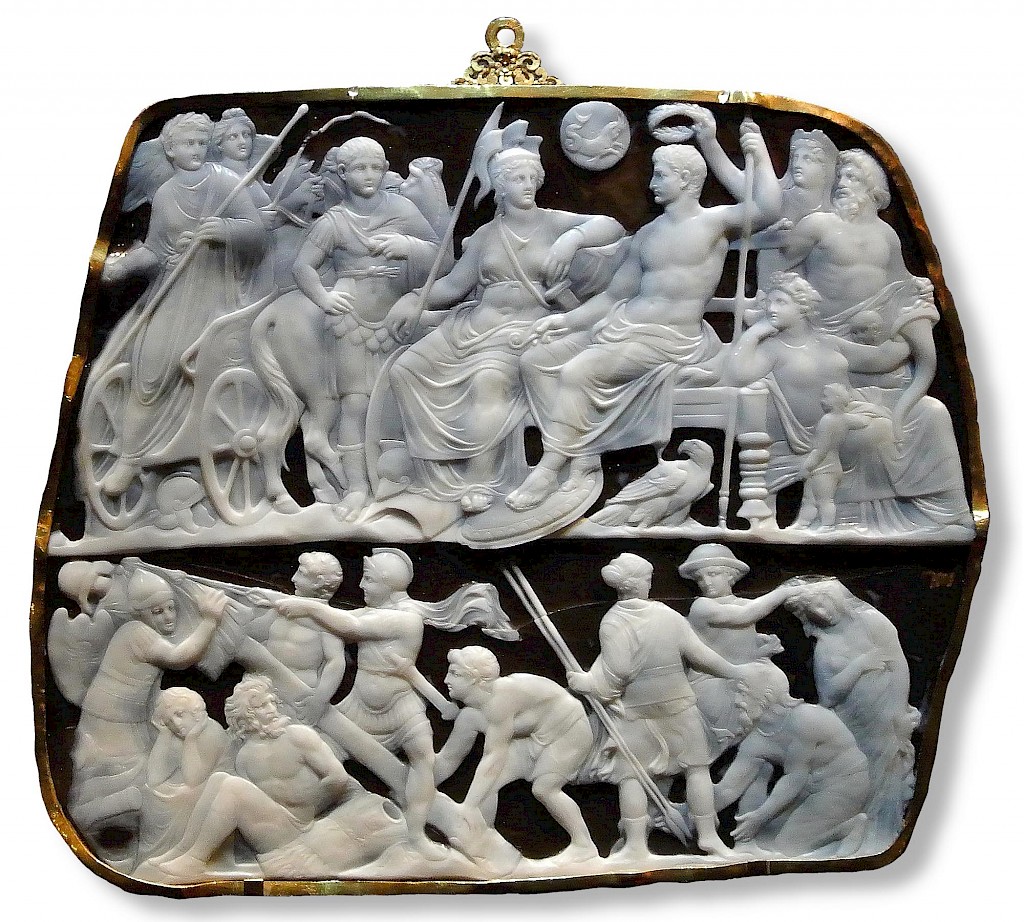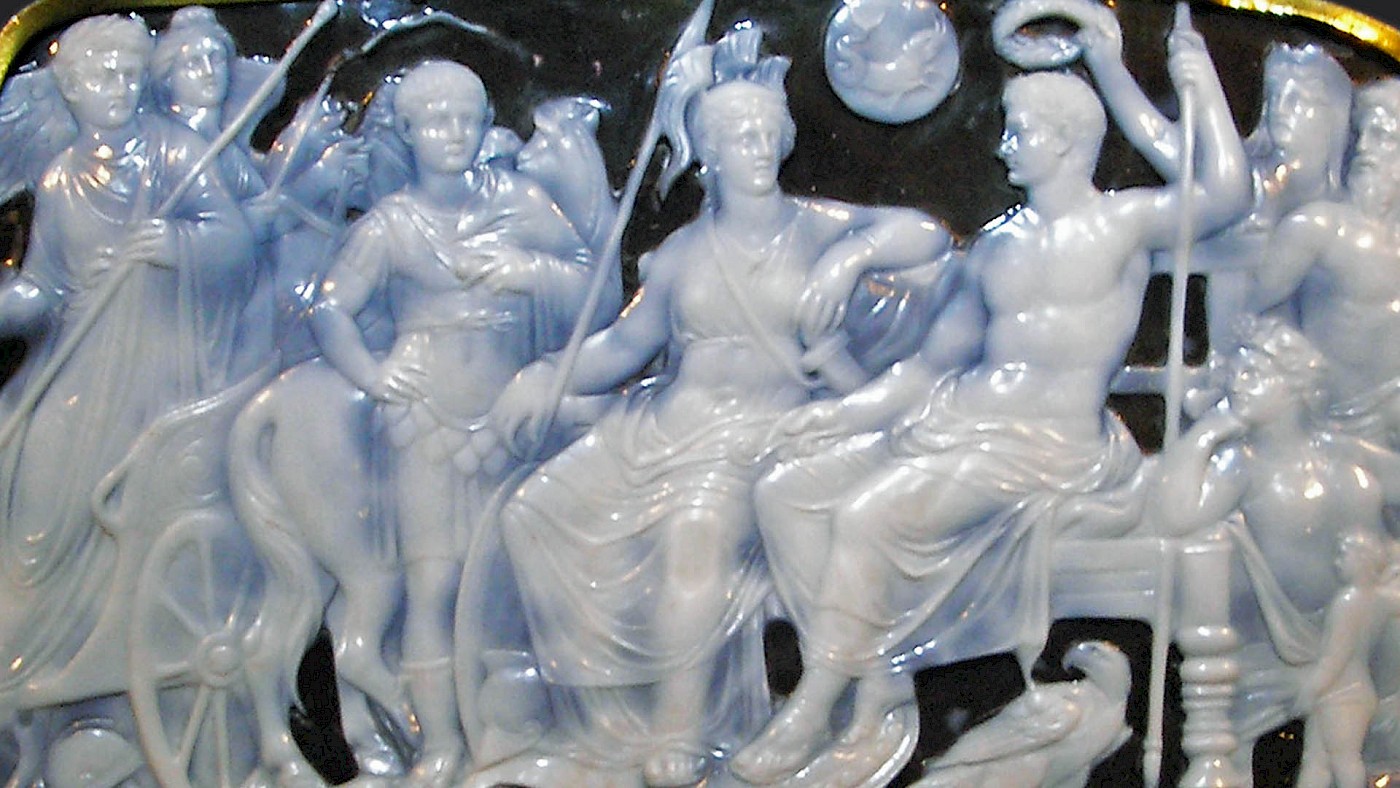A while ago, I wrote about the Augustus of Prima Porta, a statue that presented an image of Rome’s first emperor Augustus that was quite different from what was normally presented to the public. Instead of a humble “first among equals”, the statue depicted Augustus as a heroic general, and featured overt references to his divine ancestry.
A cameo made of onyx
A similar piece of art is the so-called Gemma Augustea. This is a cameo or large gem with figurative scenes. The Gemma Augustea is quite large, measuring about 19 by 23cm. It is carved from a piece of onyx that had two veins: the deeper layer was a dark bluish color while the upper layer was white. The artist carefully cut out the figures of his scenes in the white layer, removing pieces to reveal the blue background.
The gem depicts two different scenes. The bottom one shows Roman soldiers erecting a trophy. The trophy is constructed of wood and features armour and a helmet: typically, trophies like these were erected to mark a victory on the battlefield.
Beneath the trophy are two prisoners: a female captive and a man with arms bound behind his back. The wild hair and beard identify the male figure as a “barbarian” (i.e. non-Roman). At the far right are two more captives. Almost certainly this scene is meant to commemorate Tiberius’ victory over the Germans in AD 12.

The upper scene depicts Augustus on a throne. The way that he is portrayed recalls no one less than the supreme deity Jupiter himself. Note, for example, the eagle, a symbol of Jupiter, underneath Augustus’ throne. Seated next to him is the goddess Roma, the embodiment of the city itself, with a face that is perhaps modelled after Augustus’ wife, Livia. Another woman holds a wreath above Augustus’ head, crowning him. She probably represents Oikoumene, identifiable by her mural crown and veil. Oikoumene embodies the civilized world, i.e. the Roman Empire itself.
At the far right sits another woman holding the cornucopia or “horn of plenty”, a symbol of the prosperity that Augustus has brought to the Roman Empire. Some identify her as either Gaea (Mother Earth) or Italia (the embodiment of the Italian peninsula). The former is most likely considering her close proximity to the ground. Gaea is sometimes depicted as half-buried to emphasize her connection to the earth. The children are perhaps a reference to the laws that Augustus set up that encouraged Roman citizens to procreate. The male figure is perhaps Neptune, whose seas connect the distant parts of the Empire.
At the far left, a chariot has arrived driven by the winged goddess Victoria. The figure descending from the chariot can be identified as Tiberius, the son of Livia from an earlier marriage and the man destined to succeed Augustus. We’re perhaps to imagine him as having just returned from his victorious campaigns in Germania. The other male figure, in military costume, further emphasizes the military nature of Tiberius’ achievements.
In public, Augustus was always careful to present himself as the defender of the Roman Republic. The gemma augustea presents a very different side of his reign, emphasizing the glory of imperial expansion. This gem was perhaps carved shortly before his death in AD 14 or during the reign of Tiberius. It was passed around solely in private circles and presumably made for someone either belonging to the imperial family or closely associated with it.
After the demise of the Roman Empire in the west, the Gemma Augustea found its way into the treasuries of the kings of France and Austria. It is currently on display at the Kunsthistorisches Museum in Vienna.
